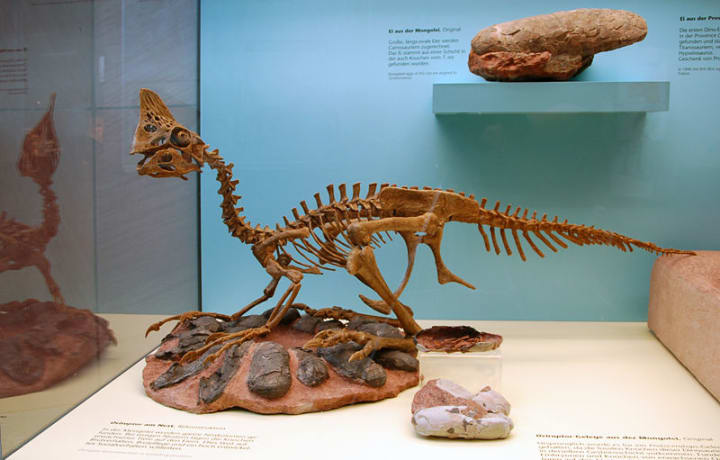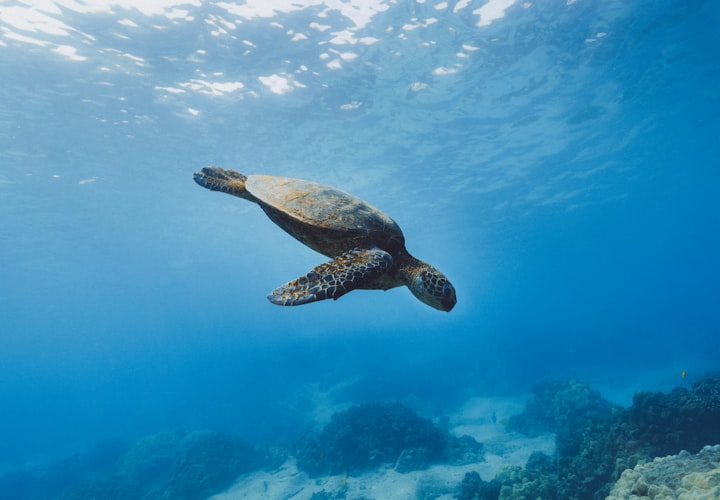Misunderstood egg thief dinosaur will debut in “Jurassic World Dominion”
Famed oviraptor snags a role in dinosaur film saga

This June, “Jurassic World Dominion” will feature several new dinosaurs never seen in the film franchise’s five prior blockbuster releases, including the curious oviraptor. Initially labeled the “egg thief,” the oviraptor occupies a provocative place in paleontology and had much of its own history rewritten altogether after a series of groundbreaking findings.

According to the book, “A Nest of Dinosaurs: The Story of Oviraptor,” by Dr. Mark A. Norell and Dr. Lowell Dingus, the first fossil remains of the oviraptor were found in Mongolia’s Gobi Desert in 1923 by paleontologist Roy Chapman Andrews. Adult oviraptors were believed to be predators or scavengers that grew to about seven to 10 feet long. The bipedal theropod dinosaur featured a small skull with large eyes, a parrot-like beak, elongated forelimbs and a long S-shaped neck like a bird. It was three-toed with sharp claws, prolonged fingers ending with hooked claws and is believed to have had a feathery covering. Some oviraptors stood out with large crests atop their heads.
In a 1923 dig in the Gobi Desert, “A Nest of Dinosaurs: The Story of Oviraptor” explains that bones of an oviraptor were found on top of a nest of what was originally believed to be herbivorous Protoceratops dinosaur eggs. Paleontologist Henry Fairfield Osborn named the animal, Oviraptor philoceratops, which translates from Latin to “egg stealer that is fond of ceratops.” Osborn theorized that the oviraptor died during a sandstorm while raiding the Protoceratops egg nest.
However, a 1993 paleontological expedition changed the oviraptor’s reputation as an egg-stealing killer. While digging in Ukhaa Tolgod, a fossil hotspot in the Gobi Desert, Norell, Dingus and other paleontologists from the American Museum of Natural History (AMNH) and Mongolia uncovered a nest of dinosaur eggs. One egg was broken open revealing 80-million-year-old fossilized remains of a dinosaur embryo that died before hatching. With a three-toed foot distinguishing the find, paleontologists eventually confirmed that the dinosaur embryo was indeed an oviraptor, and not Protoceratops.
The expedition also yielded an extraordinary fossil of an oviraptor preserved in a brooding position. Sitting atop a nest of more than 20 eggs in a position similar to how a brooding chicken sits and incubates eggs, the evidence indicated oviraptor was an attentive parent of its offspring rather than an egg thief. The finding became headline news of major newspapers, television and radio across the U.S.
While the oviraptor has yet to appear in any of the “Jurassic Park” or “Jurassic World” films, it does appear in the already released prologue for “Jurassic World Dominion.” In the prologue, which reportedly does not appear in the final cut of the movie, an oviraptor approaches a nest of eggs in a cave, cracks one open with its beak and begins eating the egg’s contents. This behavior again opens discussion about the famous dinosaur.
“It is surprising,” says Dr. James M. Clark, an American paleontologist and professor of biology at George Washington University, “as there is no evidence they ate eggs and abundant evidence the fossils preserved with them on nests are examples of parental care and not egg-eating.”

Clark authored a 1995 “Natural History” scholarly paper about the oviraptor, titled, “An Egg Thief Exonerated.” He explained, “There are at least five examples of them sitting on nests of eggs that are known to be oviraptor eggs, identified as such by the presence of embryos in eggs of the same type [including] size, shape, [and] ornamentation. The diet of oviraptors is not known. They had a very specialized skull with a weird bony tooth in the middle of the palate, but there are no fossils that preserve what they were eating. That doesn't mean they couldn't have been eating eggs, but there is no evidence for it at all.”
A 1993 "Canadian Journal of Earth Sciences" research paper, “New caenagnathid (Dinosauria: Theropoda) specimens from the Upper Cretaceous of North America and Asia,” shed light that the jaw anatomy of the oviraptor supports the idea that the dinosaur was adapted for eating eggs, but its diet was unlikely to have been exclusive to one type of food.
One of the paper’s coauthors is Dr. Philip J. Currie, an internationally renowned paleontologist, museum curator and professor at the University of Alberta, who has published widely-cited research concerning the oviraptor throughout his career.
“There are a lot of ideas out there about what oviraptorids were eating,” Currie said. “However, I still think that anatomically they are specialized for eating eggs. But I have no doubt that the nests that they are associated with are their own nests. There are at least six nests with mothers associated with them now – the original nest from 1923, a nest we found in 1990 in China, the three nests found by the AMNH in Mongolia circa 1991 [and] another nest that we found in 2007 in Mongolia. They would not have been eating those eggs.”
Though oviraptor’s film debut is forthcoming, the small, birdlike dinosaur from the Late cretaceous period has already appeared in “Jurassic Park” literary canon.
In Michael Crichton’s original “Jurassic Park” novel, towards the beginning of the story, Dr. Alan Grant and Dr. Ellie Sattler are working a fossil dig in the fictionalized locale of Snakewater, Montana. Crichton designated that Snakewater was home to dozens of nesting sites covered with dinosaur eggshells and that small dinosaurs ate eggs. “Animals like Dromaeosaurus, Oviraptor, Velociraptor, and Coeluruspredators – predators three to six feet tall – must have been found here in abundance,” Crichton wrote.
That wasn’t the only mention of oviraptor in Crichton’s landmark novel. In the final act, Grant is being hunted by a pack of velociraptors. Crichton explained, “Velociraptors were small carnivorous dinosaurs, like oviraptors and dromaeosaurs, animals that were long thought to steal eggs. Just as certain modern birds ate the eggs of other birds, Grant had always assumed that velociraptors would eat dinosaur eggs if they could.”
Grant wasn’t wrong. In the novel, he rolls an egg that he’d injected with biogenic toxins toward a closing-in-raptor in a last-ditch effort to distract and poison the raptor. The raptor takes the bait, eats the egg and perishes moments later.

The exact role and depiction of the oviraptor in “Jurassic World Dominion” remains unknown until the movie hits theaters June 10. Nonetheless, the dinosaur will appear and have significance in the film, according to its director, Colin Trevorrow, who previously directed the hit, “Jurassic World” film in 2015.
“The best part of my job is being able to choose which dinosaurs go in which movies,” Trevorrow said in a prologue breakdown video with IGN. “This movie, we really get to show some dinosaurs that I love that we’ve been holding onto for a long time. Knowing that we had the chance to go back to the cretaceous and see the oviraptor, see the giganotosaurus, several of these are going to play major roles in the film itself.”





Comments
There are no comments for this story
Be the first to respond and start the conversation.